All about Panoramas
Anyone who has been following me for a while knows that I love panoramas. My standard way of achieving panos is to shoot multiple exposures, often with a standard lens held vertically, overlapping each shot by a quarter to a third and stitching them together in Camera Raw. The resulting files are enormous and contain a ton of data that would make printing them wall size more than sufficient, but the process is cumbersome, time consuming and overkill for images simply posted on the web.
Additionally, there are limitations in making panos this way as the process tends to work best for recording static subjects that don’t move between frames. Also, the results typically show landscapes from a distance with no foreground objects due to alignment issues between frames. My sunrise photos which I have been making for years now from my back door are good examples of the off in the distance panorama. The images tend to look somewhat flat and might be more easily achieved by simply cropping a single image.
It is this lack of depth in my panoramas that I most want to break free from. Over the past week or so, I have been watching a number of Youtube videos discussing the groundbreaking Hasselblad Xpan. While no longer made, the 35mm film camera that created 65x24mm frames continues to be widely admired for the cinematic look it lends to subjects photographed with it.
It seemed to me that there was something special about this framing ratio which was contributing to this wide felt admiration. I wondered if I could duplicate the format using a standard digital camera to overcome some of the limitations mentioned above.
What was so special about this view that cropped so much off the top and bottom of a standard 2:3 frame? Was the lure of panoramic photography simply its extreme cropping? The snowdrop above was actually made with two exposures stitched together in the usual way. But I was lucky to get two images that would even line up as wind was blowing the little flower. It occurred to me beyond the unusual frame ratio, the wide angle of view was also contributing to the format’s success. I turned to the Xpan lens specs for clues.
The Hasselblad Xpan employed three medium format lenses, being the 30, 45 and 90mm which are equivalents to 17, 25 and 50mm in full frame 35mm lenses. My widest really good lens is the Viltrox 13mm which is equivalent to 25mm in full frame. This wide field of view is part of the panoramic experience taking in large vistas in a single image.
The hard part of shooting the 65:24 crop in camera is pre-visualizing the end result when this screen display option is not built in. 16:9 is the widest format that can normally be displayed in camera, but there is a workaround. I found this video which specifically addresses the issue on Fujifilm cameras, but will work on many other digital cameras, if you are brave enough to dig a little deeper into your menu options.
As outlined in the video, it involves first selecting the 16:9 format instead of the standard 3:2 format, and then setting the grid pattern to grid-24 instead of the often used grid-9, useful for working with the rule of thirds. Using grid-24 on a 16:9 format shows the 65:24 frame as being the area below the first and above the last horizontal lines within the grid display. This will make more sense if you watch the video. Once I had that figured out, I added some electricians tape to mask off the unused portion of the 3:2 frame on the back of the camera.
The shot of Katie above was my first attempt at previsualization the 65:24 crop using this method. While the black tape covered useful information normally available on the back of the camera, I could still see this through the electronic viewfinder. My setup was now complete. I could compose using the grid lines in the evf and double check my compositions using the rear screen. Now all I needed was a subject to try this out on.
Northumberland Trust - McColl Nature Reserve
On Saturday, I was invited to attend a walk being sponsored by the Northumberland Land Trust on Old Wooler Road near Codrington. The idea was to walk the length of the property which stretched southward to Cold Creek. We were told to wear waterproof footwear and prepare for some up and down hiking.
Before the day of the event, I began searching the Internet for xpan shots to see how people had used the format to its best advantage. As shown in Tudor Mateescu’s video above, the key to using such a wide format is to build context by showing the environment surrounding the main subject. The best shots seemed to be closeups of people with the context of their immediate environment filling the background. This is where the wide angle lens is so important. It reaches out beyond the subject and packs a lot of information into the background.
Here are my first attempts at using a wide angle lens and a 65:24 crop to show depth and context within a panoramic frame.
It strikes me looking at this first image, how the xpan framing limits our vision and forces us to see what’s going on within it. There is no room to look up or down, or for our eyes to wander without purpose. We scan the frame horizontally and then dive deeper into the frame following the walkers ahead of us. We are placed in the scene looking out from the perspective of the camera lens. We recognize the frames limits almost immediately and spend no further time trying to break the boundaries of it as often happens with more conventional formats.
The subjects, while frozen in the moment, are active within the frame. We can see the direction of their movements and their relation to each other. The walkers in the foreground are blurred, lending additional emphasis to the kinetic energy within the scene. But equally important, we see the context — the forest, the ground, the invisible trail they are walking along. We can imagine the walkers disappearing out of sight leaving the scene unchanged except for their presence in it. Suddenly, the picture takes on a much greater sense of place. There are broken branches left over from a recent ice storm. our eyes are left to wander about. We see the contour of the ground and the grass and leaves recently liberated from a load of ice and snow. By limiting the parameters of the frame, we are set free to inhabit it.
And then came the next surprise of this radical framing. The vertical panorama.
Just like the horizontal panorama, the vertical panorama limits the scope of our view, but with this orientation, our ability to look up and down is restored. The depth of the image comes alive. We can easily see how objects further away appear much smaller. Our sense of depth is greatly enhanced, the tall format mimicking the height of the trees above the walkers.
The day was drab, but not rainy with temperatures in the mid to upper single digits. The forest was largely colourless, being mostly grey except for some pale yellow beech leaves which shone brightly against the dark woods. The bright colours of the walkers clothing clashed with the grayness of the natural world around them. I made the decision to stick with black and white for most of the shots to keep the eye calm when scanning the images. Black & white seems to be a great equalizer, sparing the person in the bright red jacket from standing out like the proverbial sore thumb.
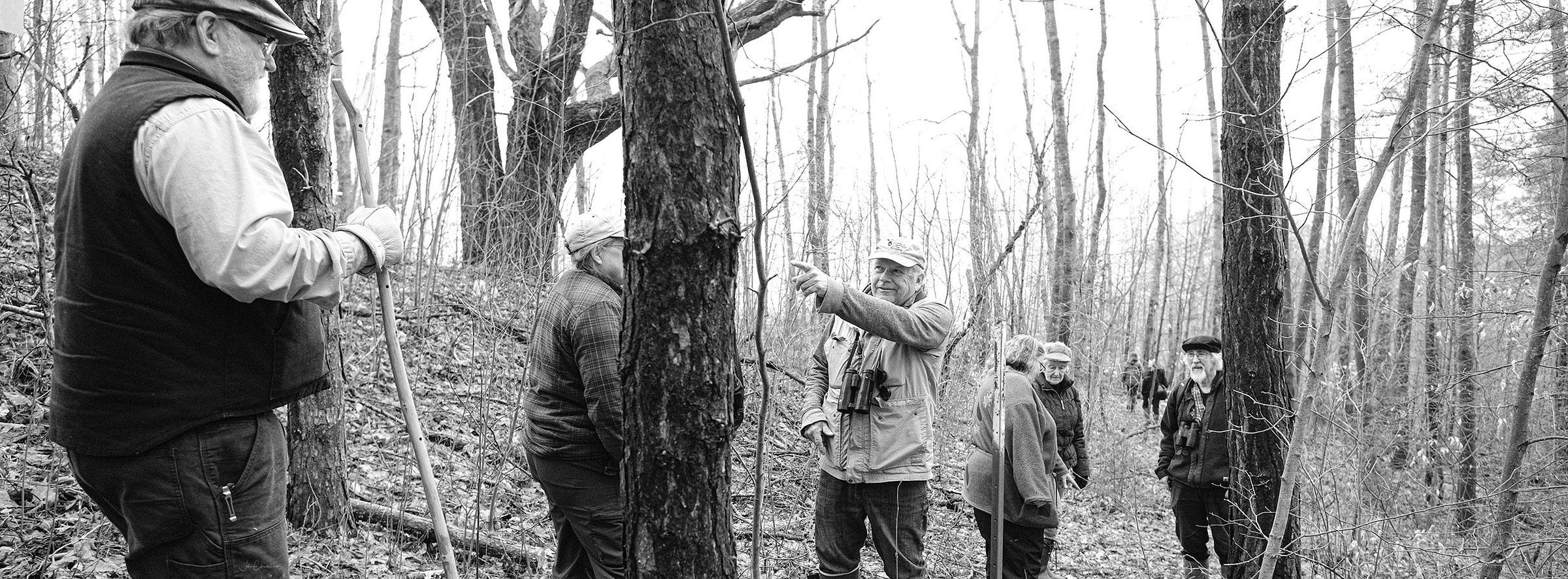
The limited vertical space on the horizontal panos can feel quite limiting at times, as we shoot the scene in front of us, but it seems unimportant that we are forced to cut off our subject’s heads and feet. The result of this harsh vertical crop is to enhance what does exist within the frame including foreground details such as a pen clipped to a pocket and the line of walkers ahead of us disappearing around the corner.
A wooded lot is a busy place. It can be hard to see the forest for the trees and vice versa. A vertical frame however is perfect for looking up and down the trunk of a single tree. Very little horizontal spread is required to establish context. A sliver of background either side is all that is required. At our feet, at the base of the tree, leaves and twigs are rendered in sharp focus making the tree and the viewer feel grounded within the scene.
Halfway through the McColl property, the path turns right and traverses the full width of the property. Most of it, shown within this photograph. Again we get a sense of being there. I’m not photographing faces here or trying to show individual people, so the size doesn’t matter. Human figures within the scene give the property a sense of scale.
These walks are good for us, and it is fun to learn about nature and what Land Trusts do. (Answer: Land Trusts preserve land from future development to protect natural spaces for future generations and wildlife.) It’s educational. Traipsing around on uneven ground is also good exercise, much better than running a treadmill, pedaling a stationary bicycle, or even circling a flat cinder track over and over again. We keep the pace slow but no doubt will feel it in our muscles by the time we return to the parking lot where we started. Who knows how much benefit we get from the fresh air alone. Along the way we stop to listen to various birds. These walks are not only good for our bodies and minds, they are good for our souls. A forest walk can recharge your batteries and who doesn’t need that these days.
“People come and go.” Doug explains, “but a T-rail stuck in the ground will last a very long time, unless of course, someone comes along and moves it.” This one marks a reference point related to bird studies on the property.
One of our members, retired forester James Munn, examines the buds on a tree. If I heard and remember correctly, I think he said it was a black hickory. I was impressed by its upper branches and how they filled up the space at the top of the small tree. Quite different from everything else around it.
Signage at the edge of the property goes both ways, each telling travellers on the other side what the rules are. This farmer’s field is clearly off limits. The land trust property also has rules posted that must be followed.
Looking out at the farmers field, it is easy to see how this is a substantial farm with heavy investment demanding respect by neighbours and passers-by.
Not all of the photos I took yesterday were black and whites. When warranted, colours can tell us things monochrome images miss.
Perhaps a panorama was not required for the image above, but the format is versatile enough to handle it. End use of the image is another important consideration in choosing a format. Here it is less panoramic and simply a short, wide image.
This sign is due for an upgrade. The Lone Pine Land Trust is now the Northumberland Land Trust, the two land trusts having merged into one recently. The Northumberland Lands Trust has been growing in leaps and bounds as more people turn their attention to land stewardship and conservation.
The image below was taken with a macro lens, so not as wide angle as many of the other images in this set. I further cropped the photograph to capture the sharpest area of focus in the centre of the frame. Shooting with the Fuji XT-50’s 40 megapixel sensor allows me the luxury of some cropping with little or no effect on display quality. As a result, context is greatly reduced, but I think it is still quite obvious this is a picture of a fallen tree, near other fallen trees.
I didn’t even see the little red shoots reaching up from the green mass until I got down to look at it more closely. Careful observation is required to discover the secrets of the forest.
But now I must catch up with the group who are far ahead of me. Taking photos is not the same as getting where you are going. There were several times during the day when I found myself on my own after losing track of time examining some small detail.
An oak gall was one of the things that caught my attention along our route. These tiny hatcheries are created by parasitic wasps. They do no harm to the host pant which are often but not always oak trees and in olden days were used in the manufacture of writing ink. I talked a bit about them in another Land Trust walk from January of this year. This is another macro image showing neither context nor depth. When the emerging wasp leaves, it does so through a small hole it cuts in the exterior.
We continued our march south and were soon close to Cold Creek, a freshwater tributary of the Trent River.
As we approach the stream light levels rise. A large maple at the edge of the riverbank holds the history of generations. Nearby, small saplings have been cut down by beavers. One tree we saw had been cut by beavers only to get hung up in the understory at the edge of the stream. We’ve all days like that, where despite our best efforts, our hard work comes to nothing and we must try again some other time.
Slipping away from the main group, I step out into the middle of a field where Cold Creek meanders through in broad curves. Erosion and sediment are continually working away at the banks of the stream creating conditions that will eventually form a small oxbow lake.
The water is quite still here (at the moment at least) allowing perfect reflections in its quiet surface. Cold Creek is an important freshwater fish habitat for brook trout, but open areas like this one exposed to the mid-day sun are not good for the fish. They are cold water creatures that need to be in shade. Land development along the banks of the river has made life difficult for creatures that require forest streams. Talk of planting trees on the south side of the creek was discussed, along with deterrents to keep beavers from felling young saplings that might be planted.
Fellow Northumberland Photography Club member Norm Rae spots some fungi on a rotting stump and goes in for a closer look.
As often happens when photographing in groups, one person spots it and everyone has to get in on the act. This is my shot of Norm’s Fungi.
The return trip back from the creek was faster than going down. We gathered once more in the trail that cuts across the middle of the property as Doug gave his thank you to everyone for coming out today speech.
It was a nice outing discovering the McColl Nature Reserve. To find out more about the Northumberland Land Trust, please visit the Northumberland Land Trust website,
I think through this exercise I’ve learned quite a bit about adding depth and context to panoramic images. Panos are another tool in the photographer’s bag of tricks that can be used to focus attention on certain aspects of a scene and help to impart a narrative within a single image. And that concludes another article of My Photo Journal.
As usual I’ll leave you with a song. This one is from a highly underrated 1972 album by Joe Walsh entitled Barnstorm. This track is I’ll Tell the World About You.

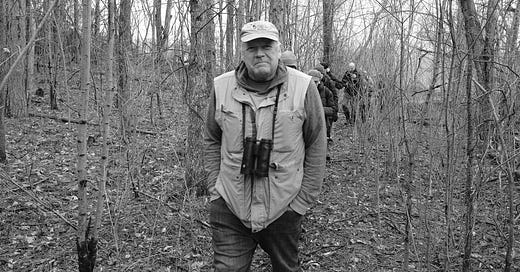


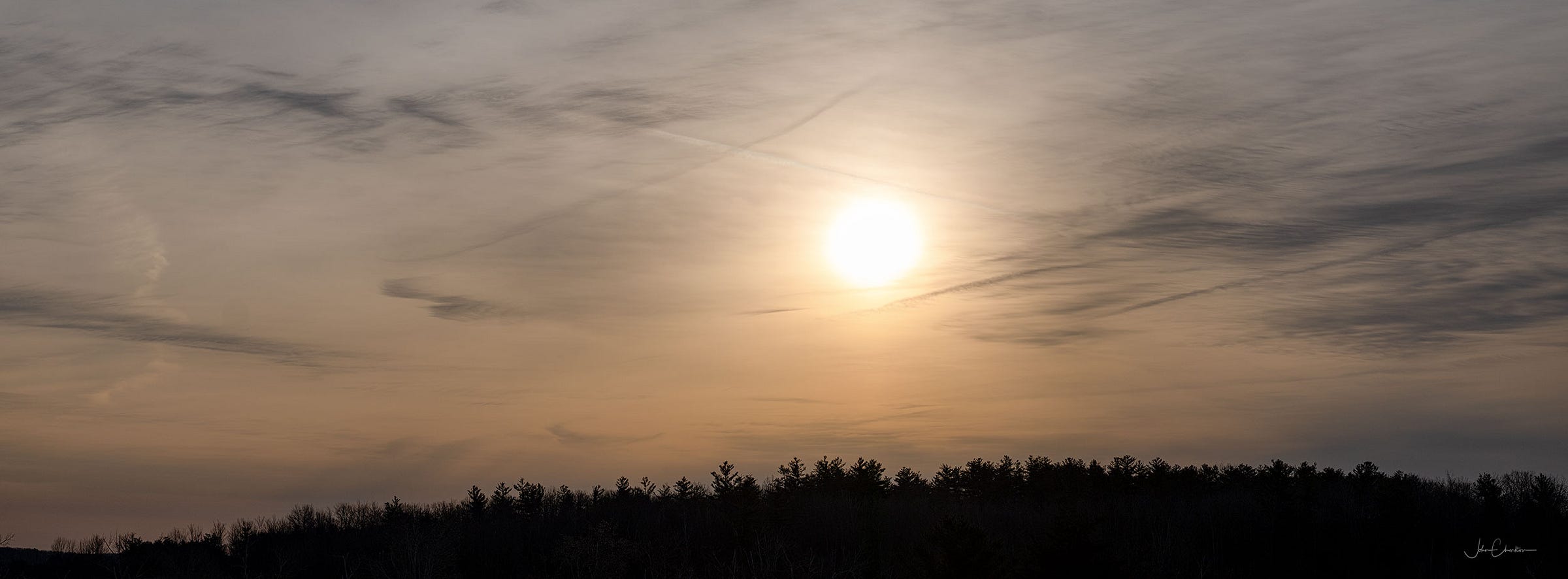
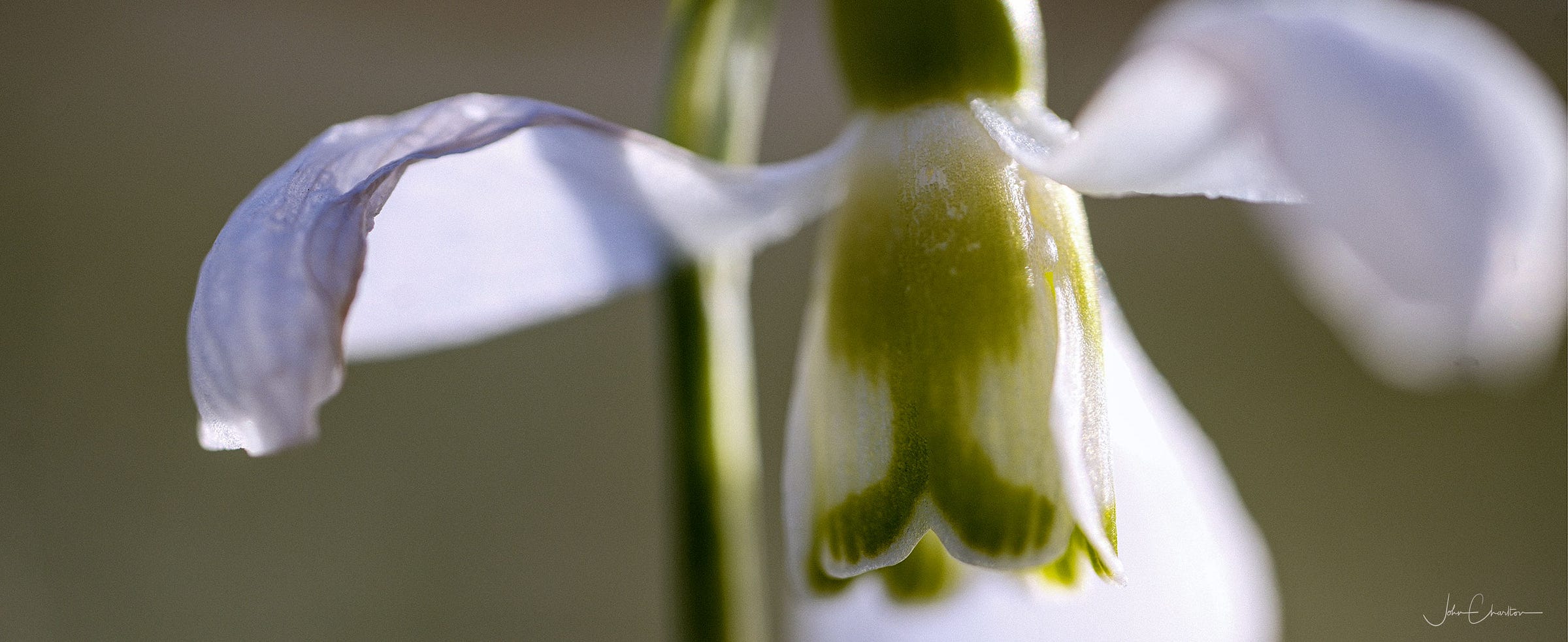
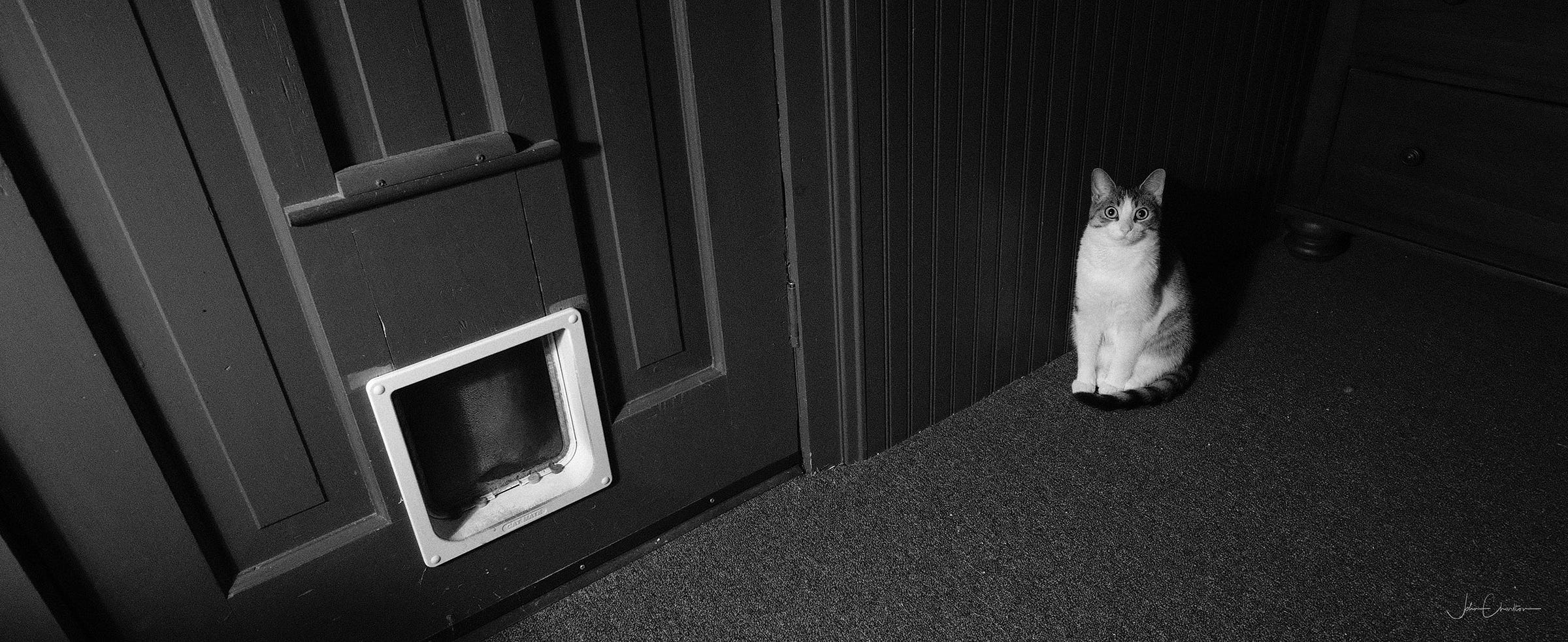
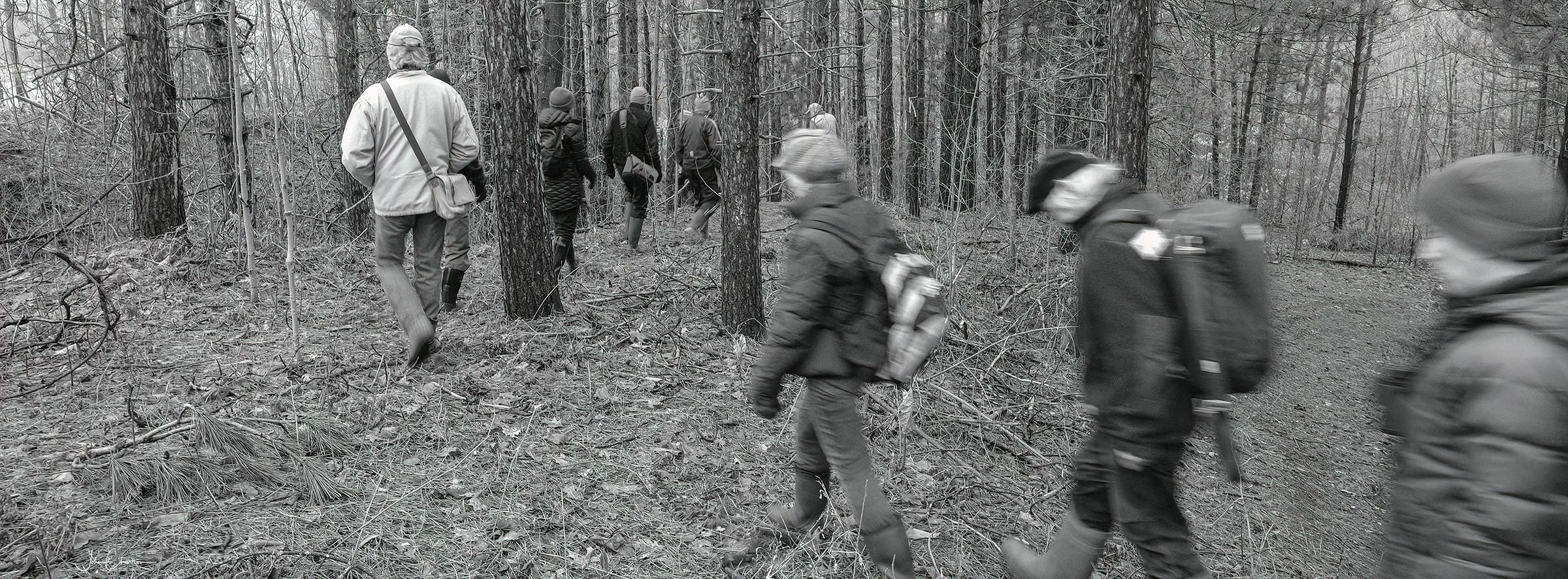
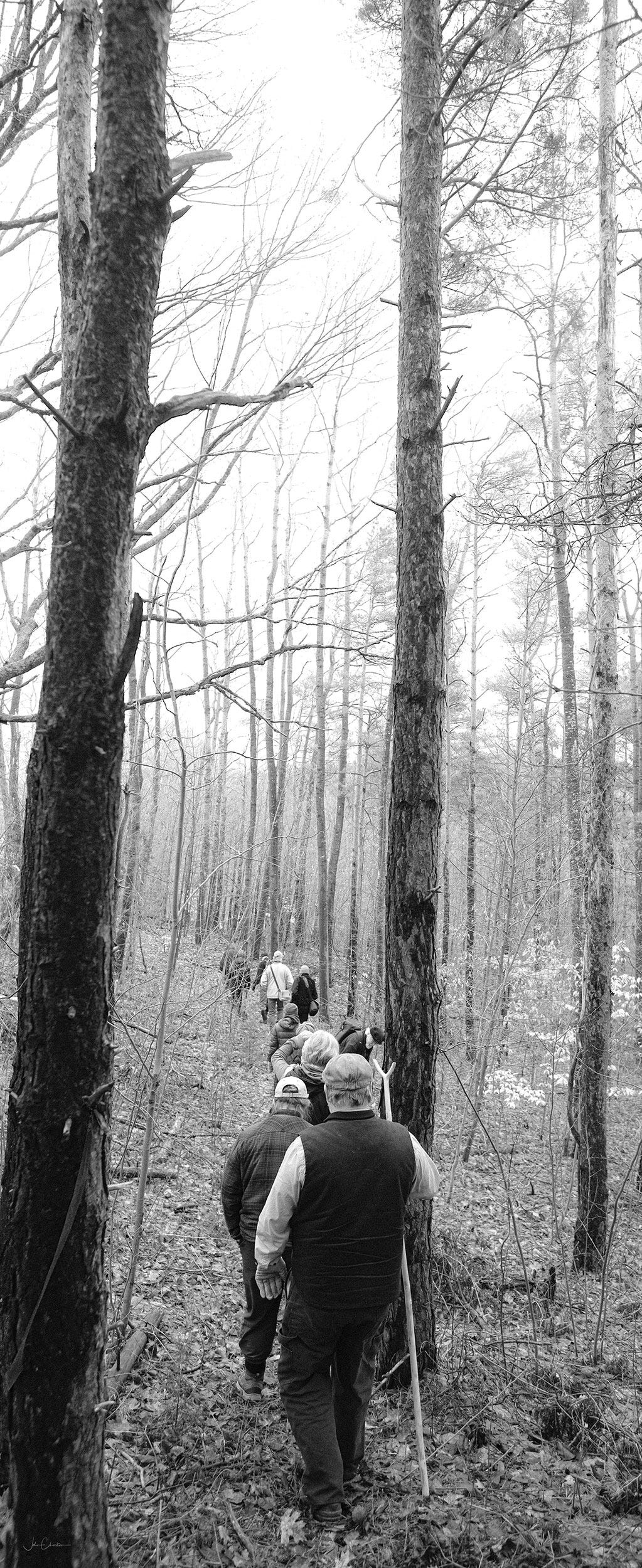
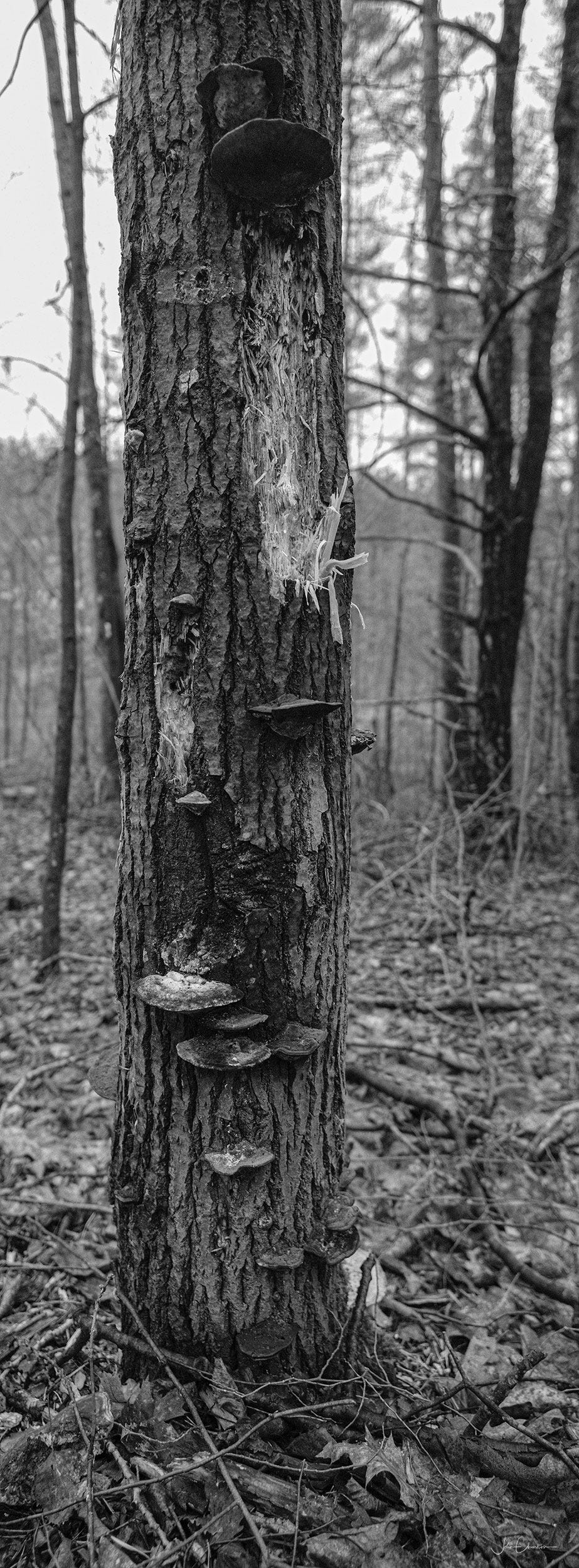
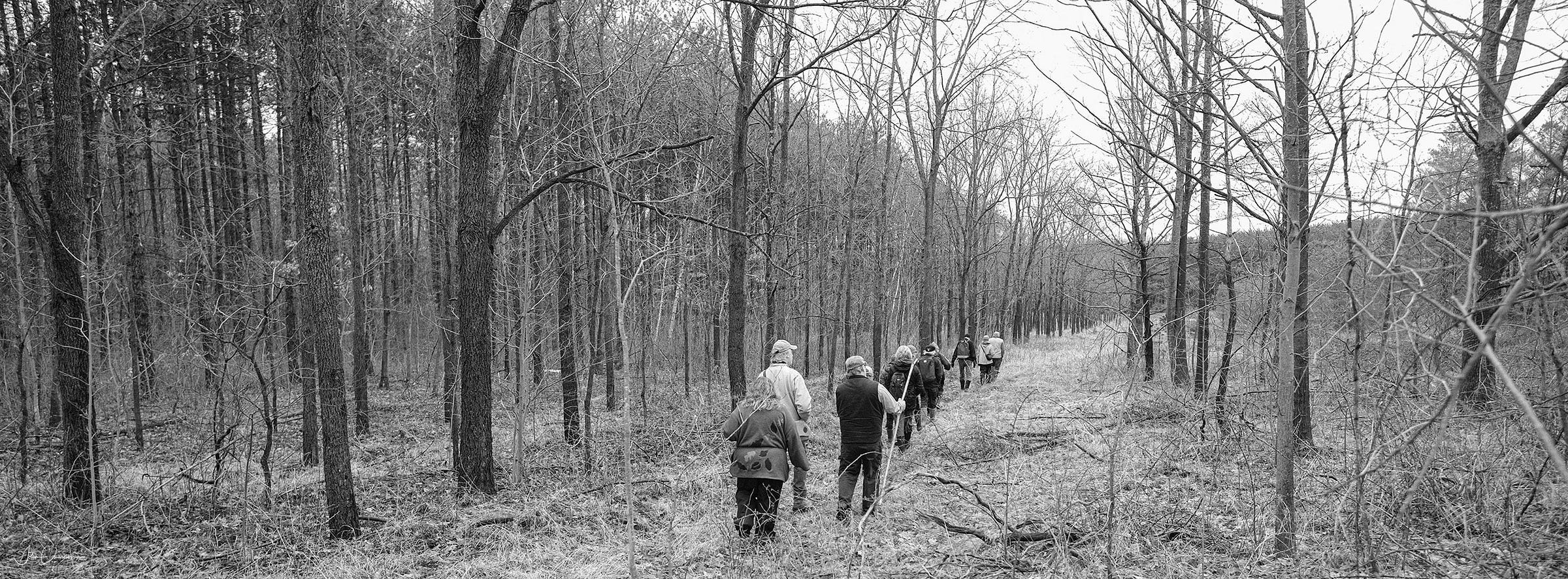

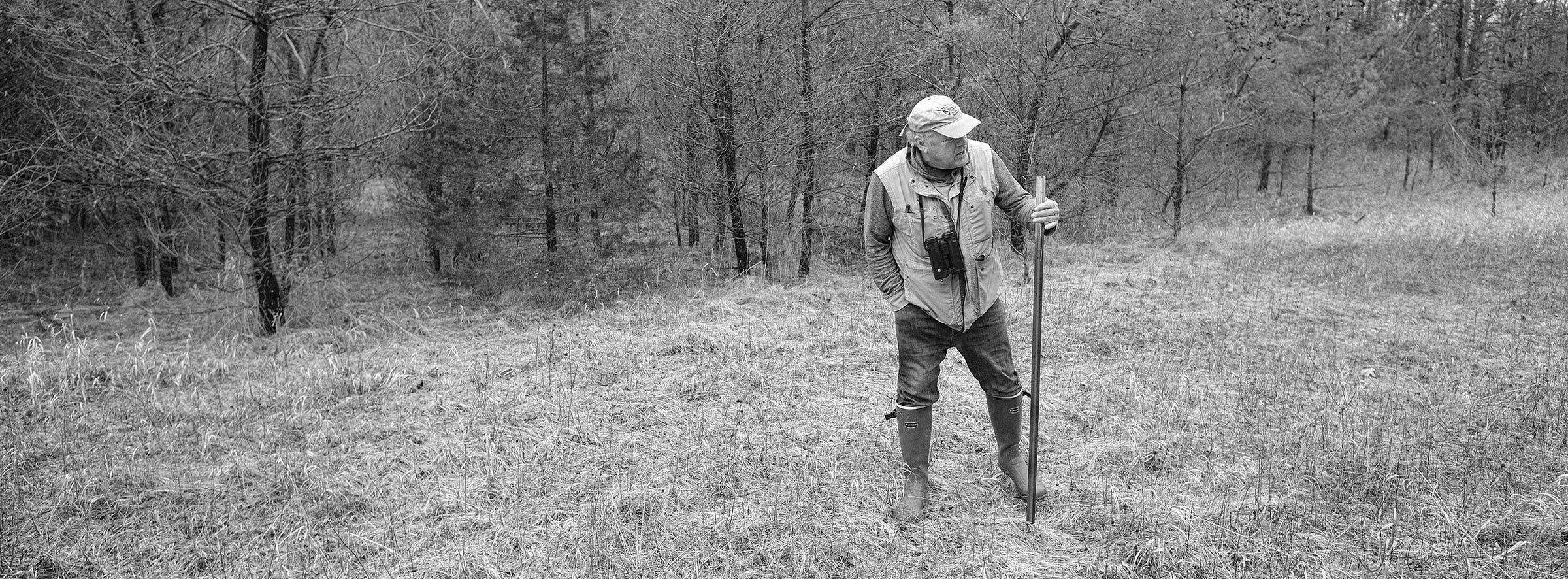
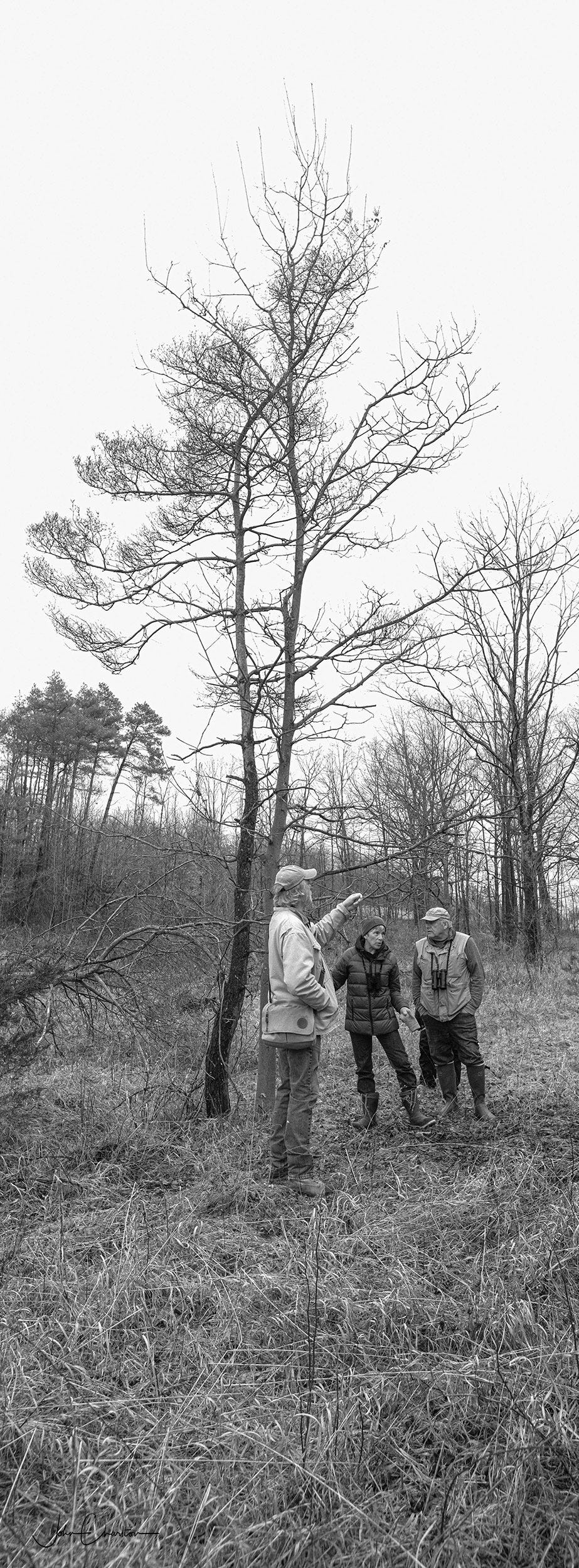
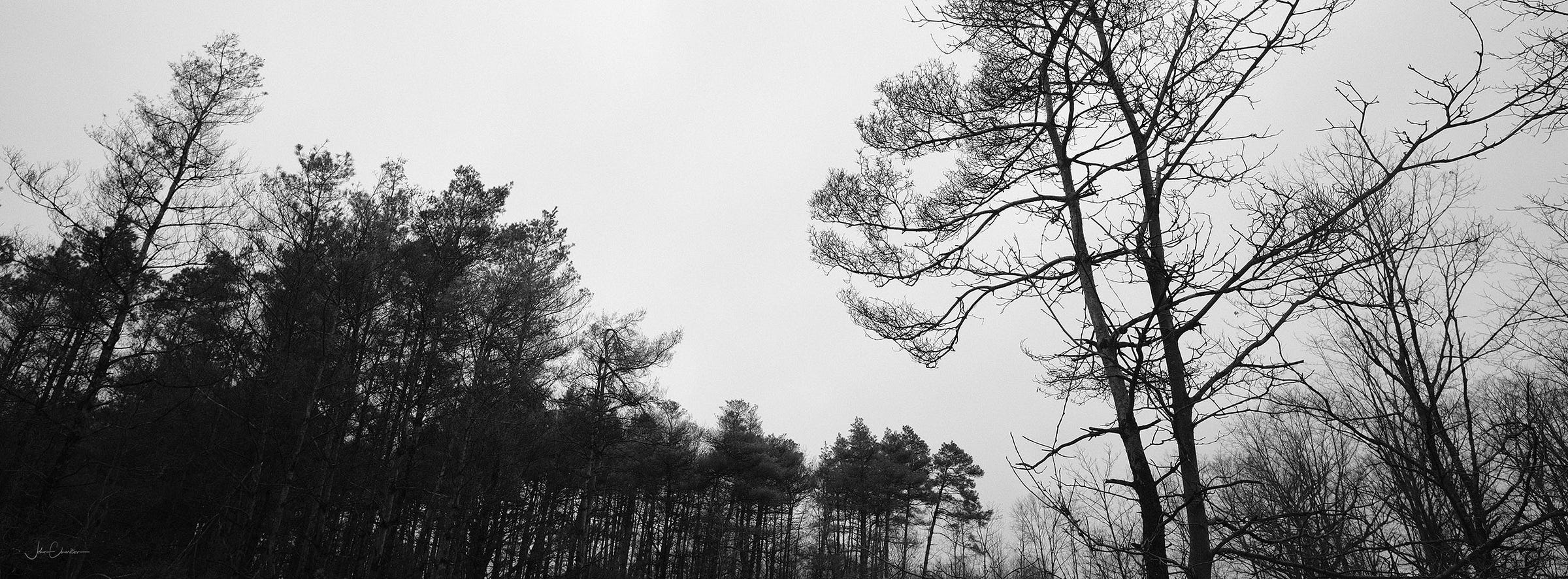
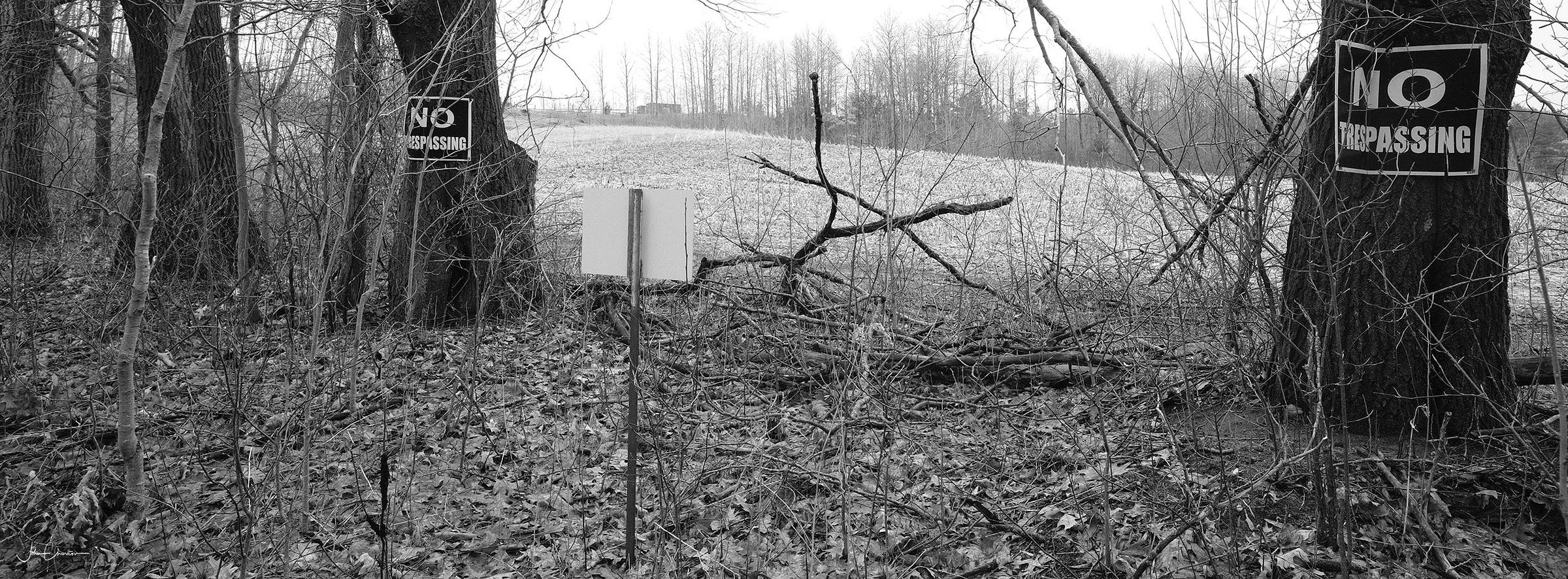
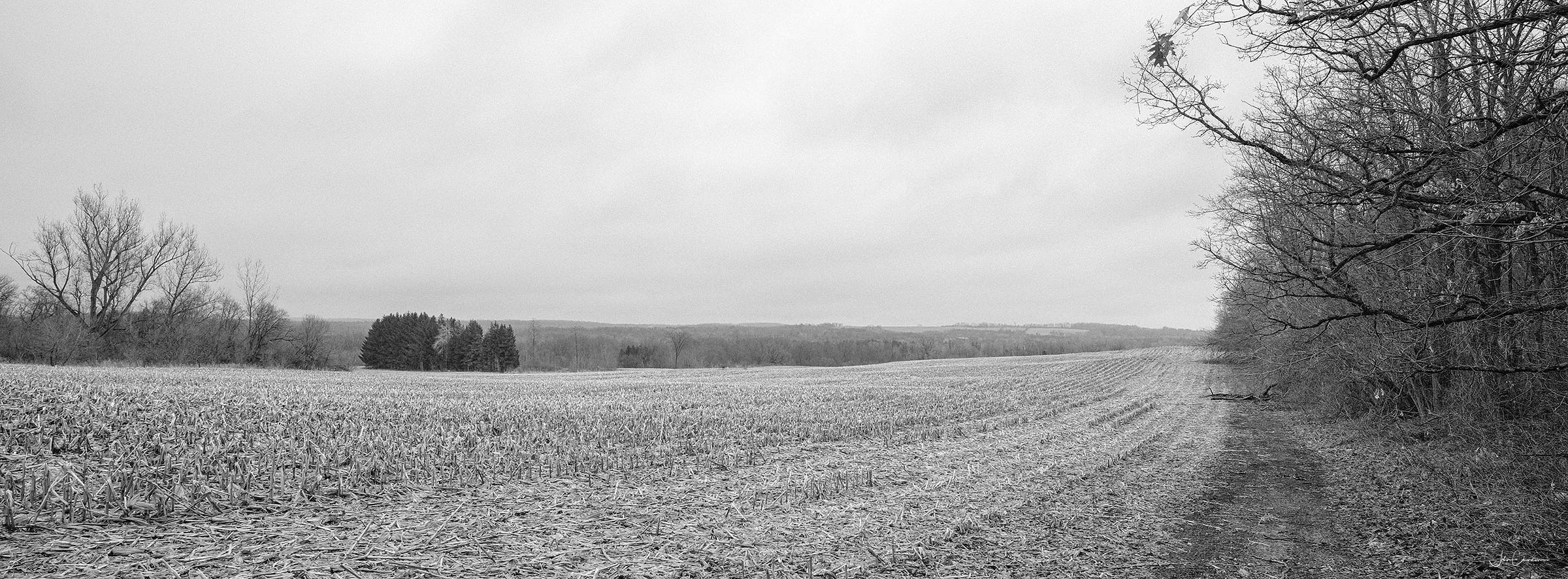
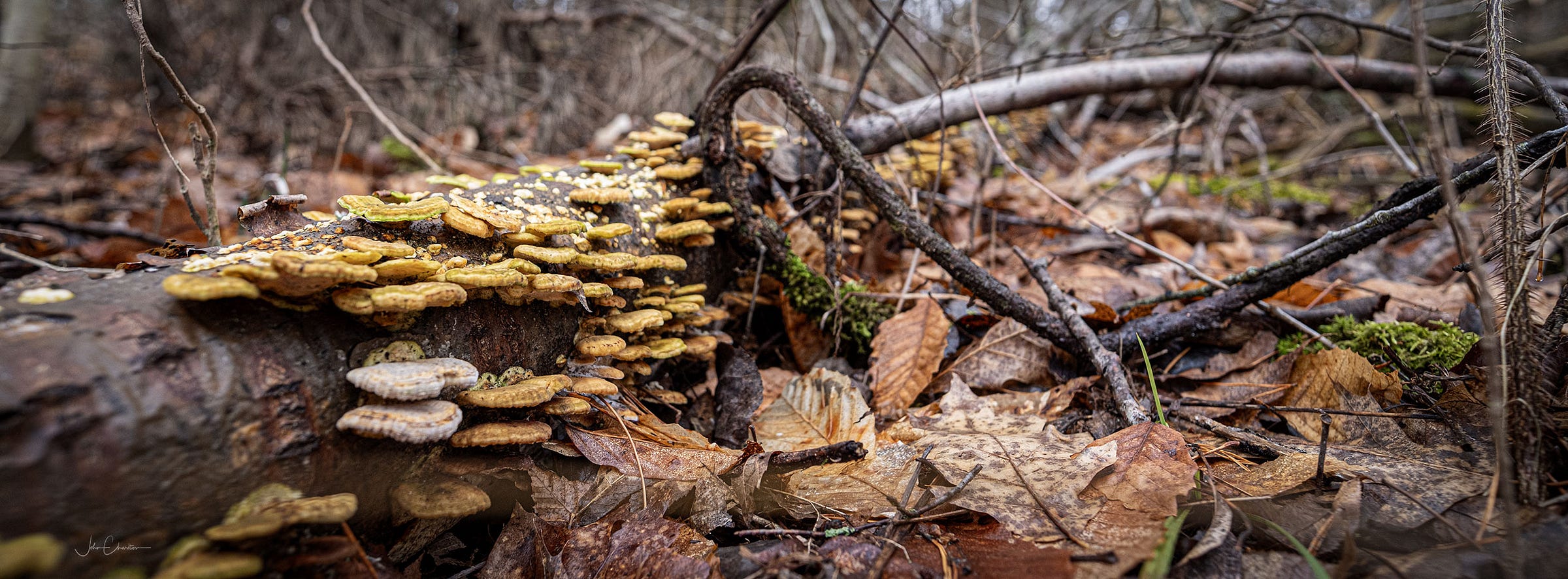
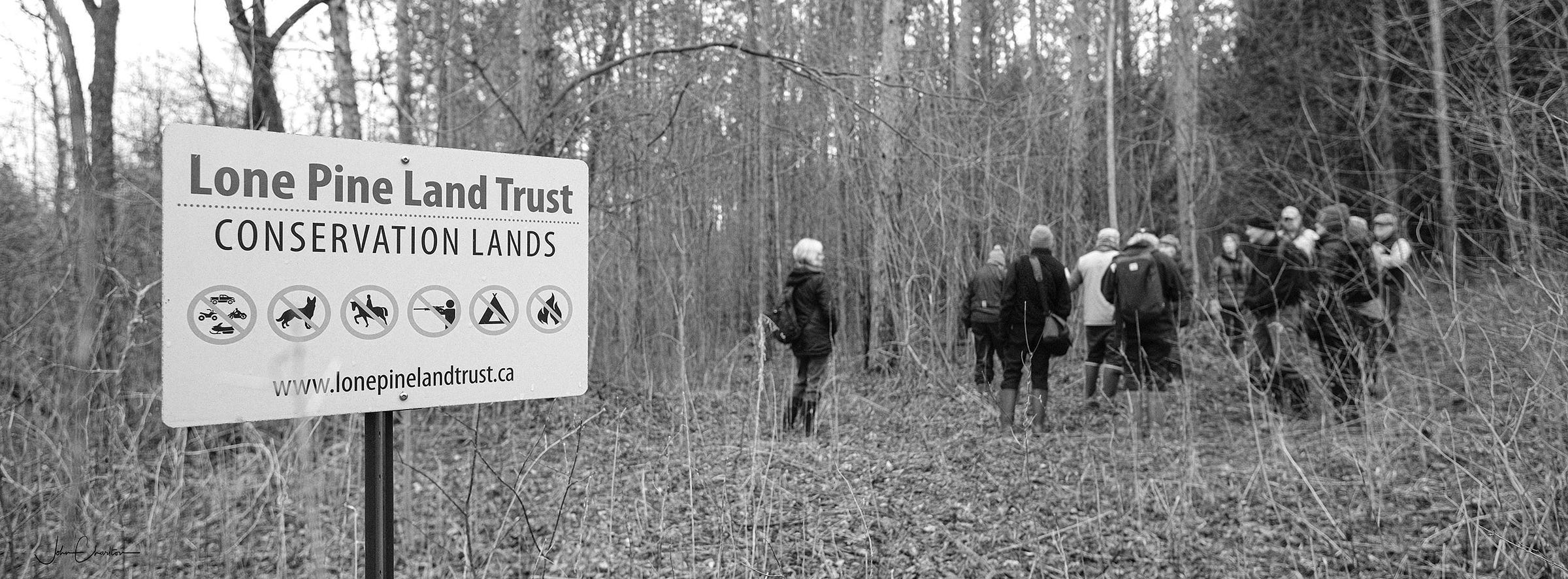

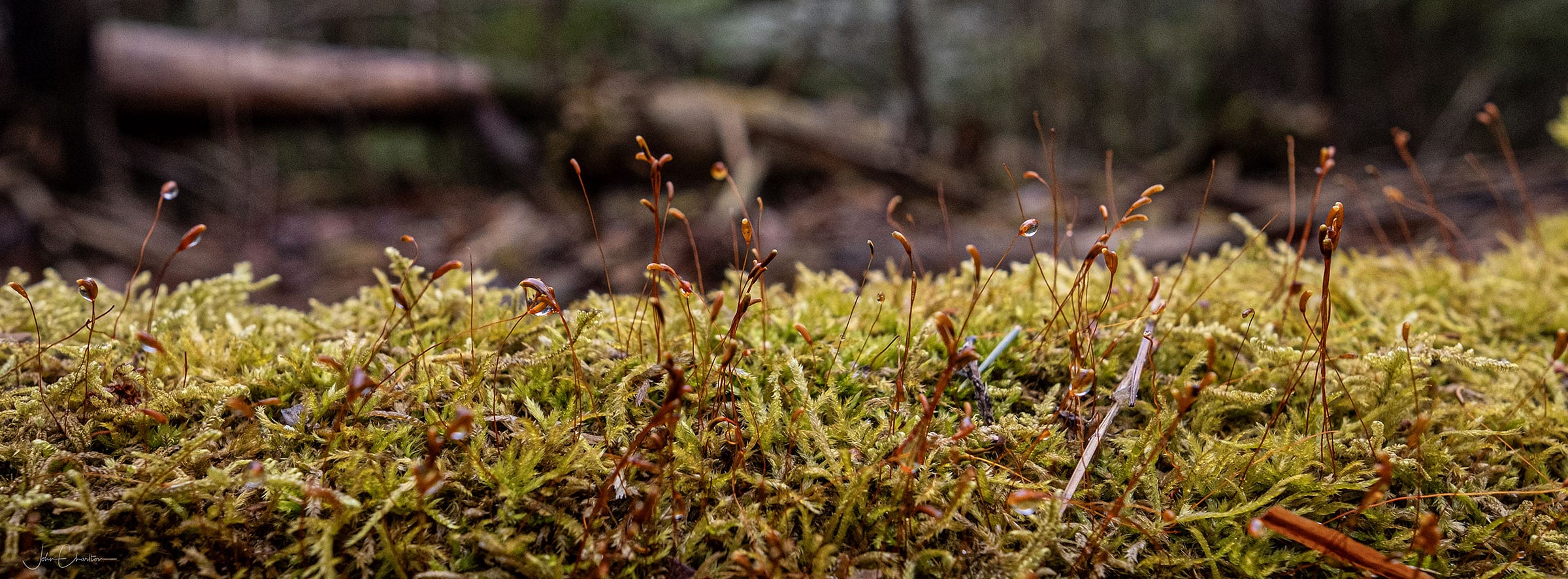
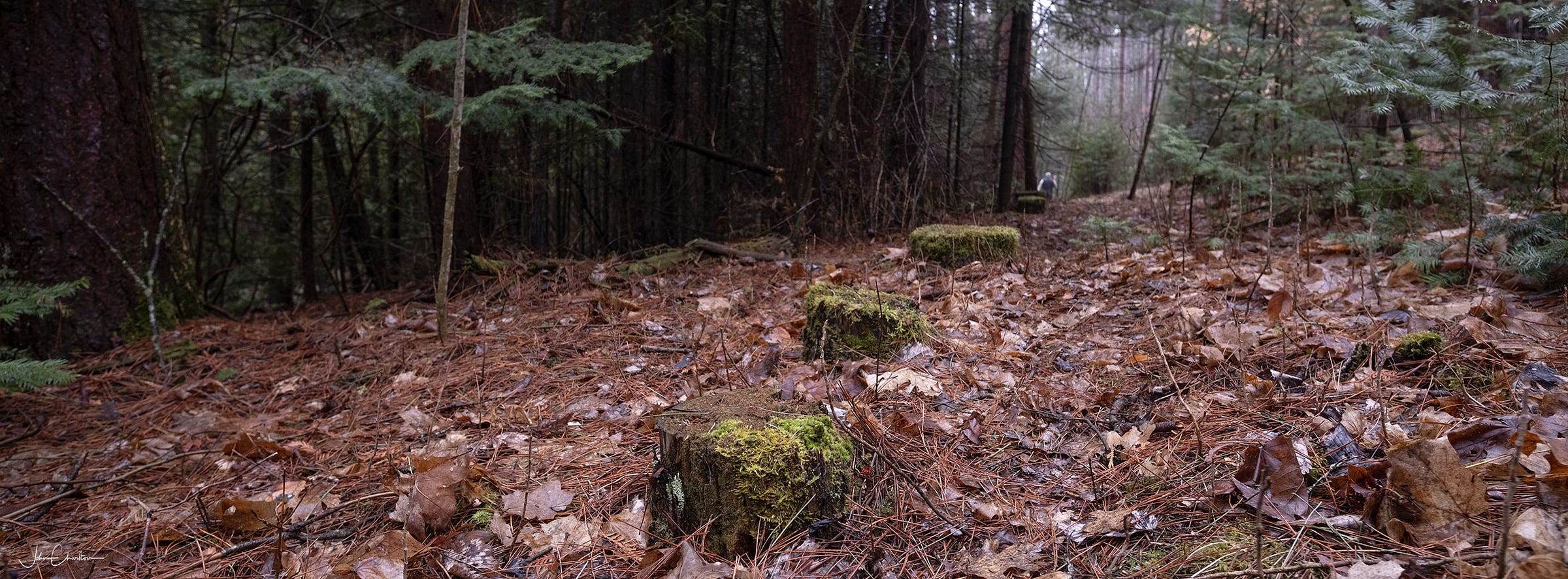
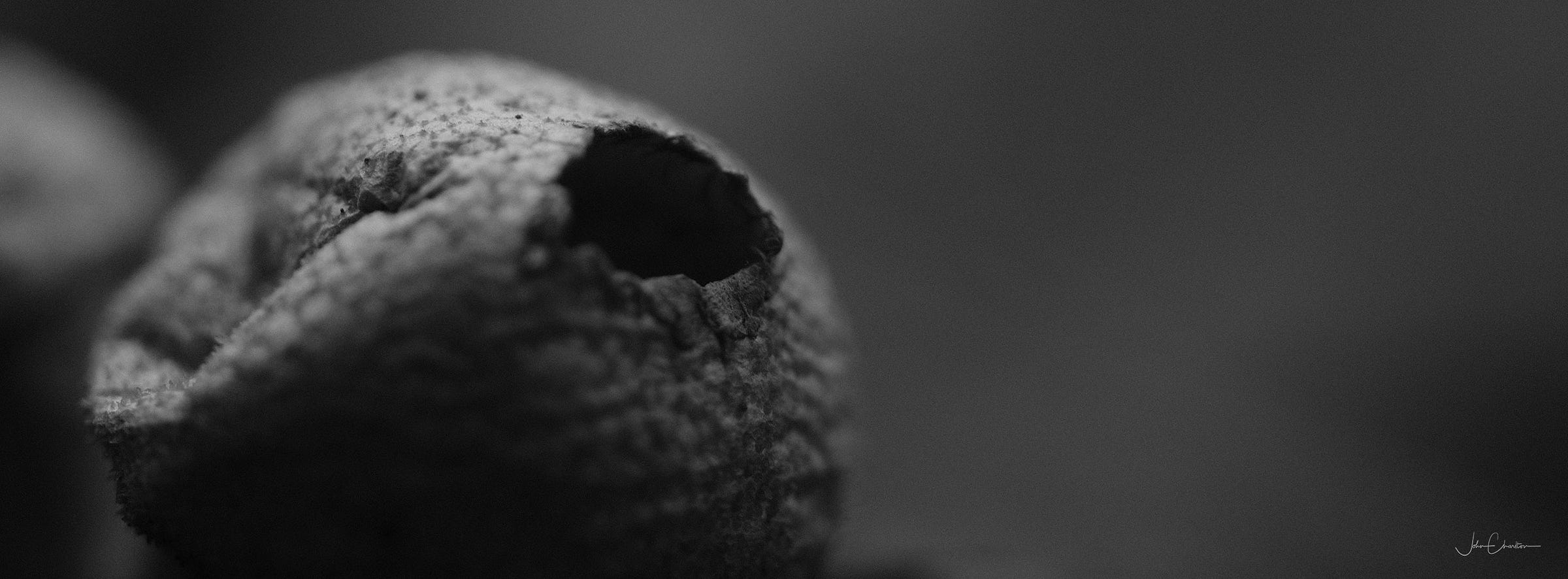
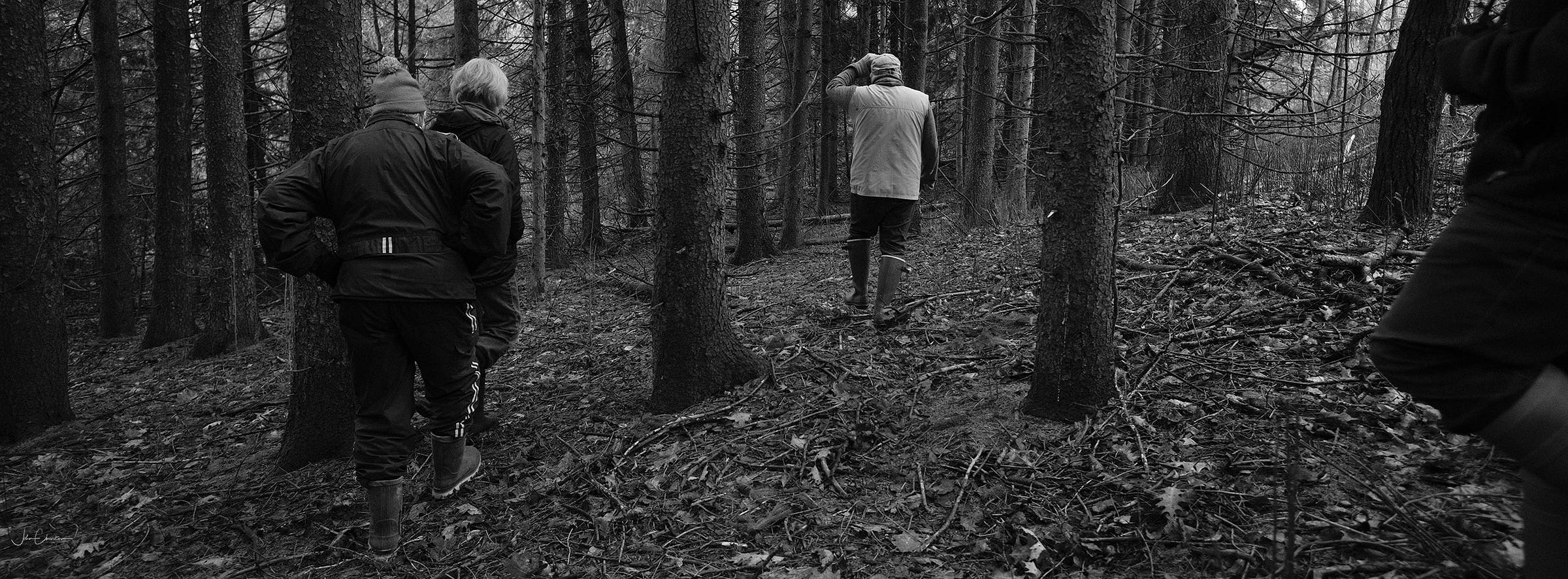
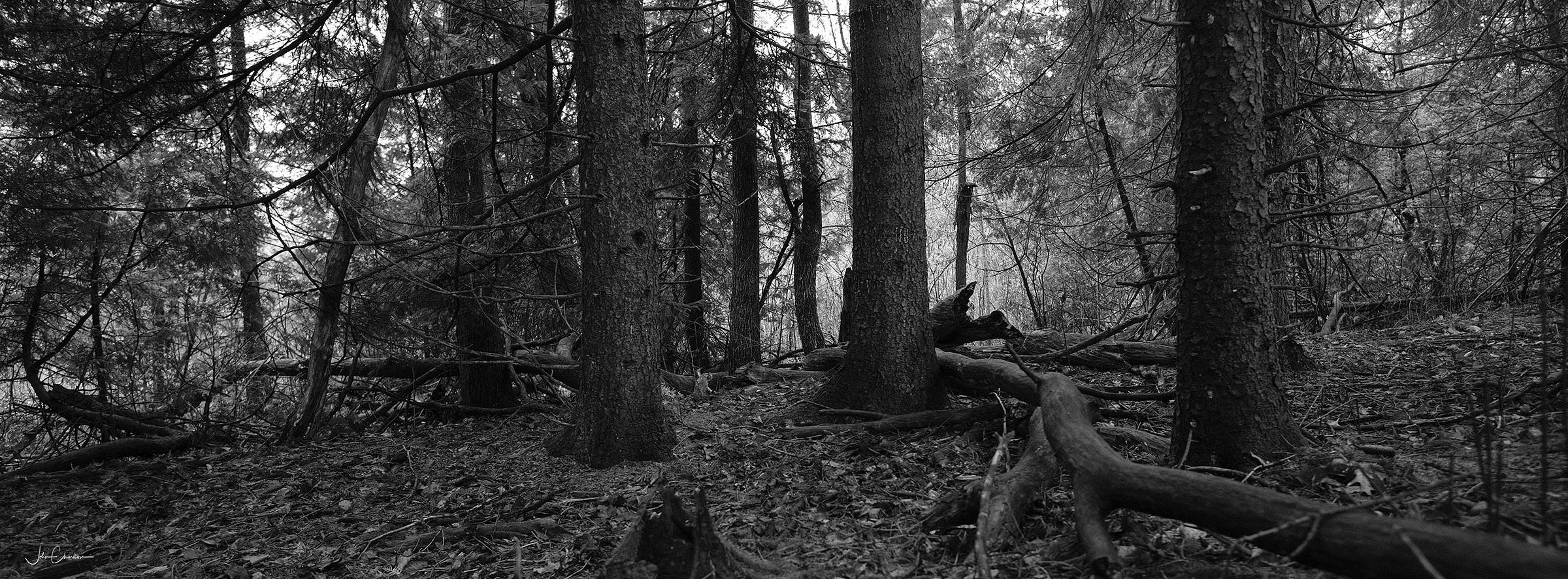

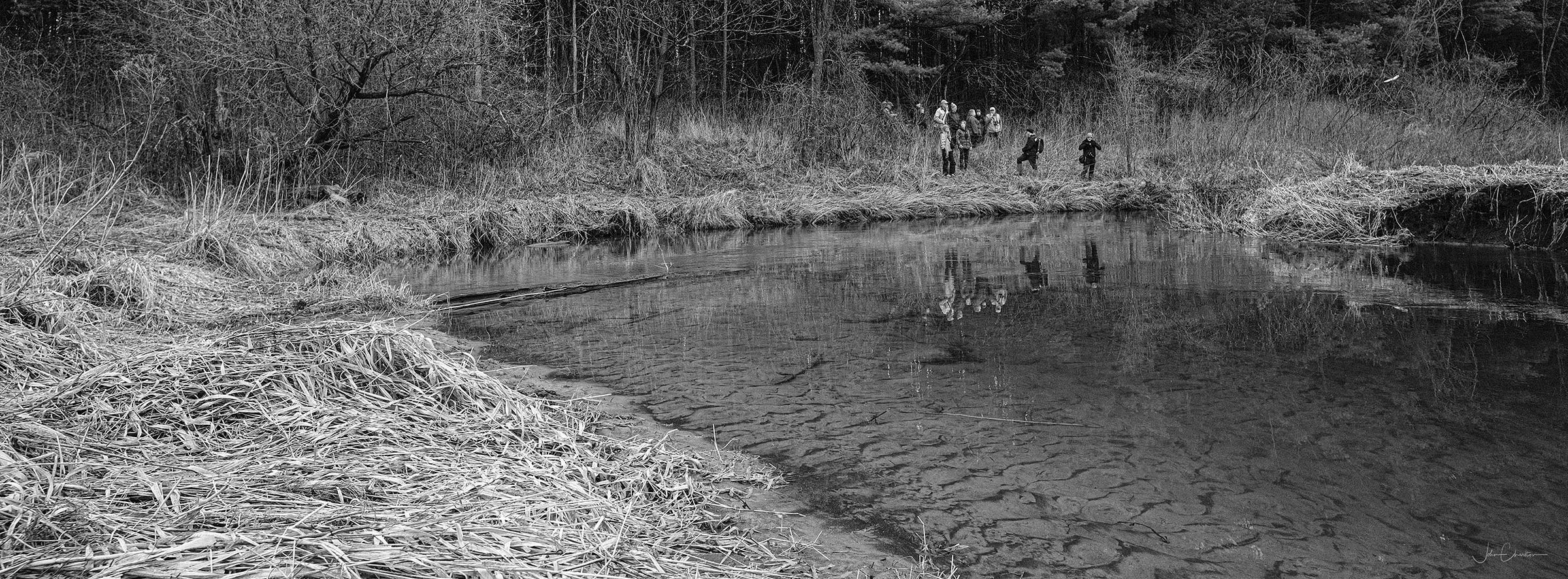
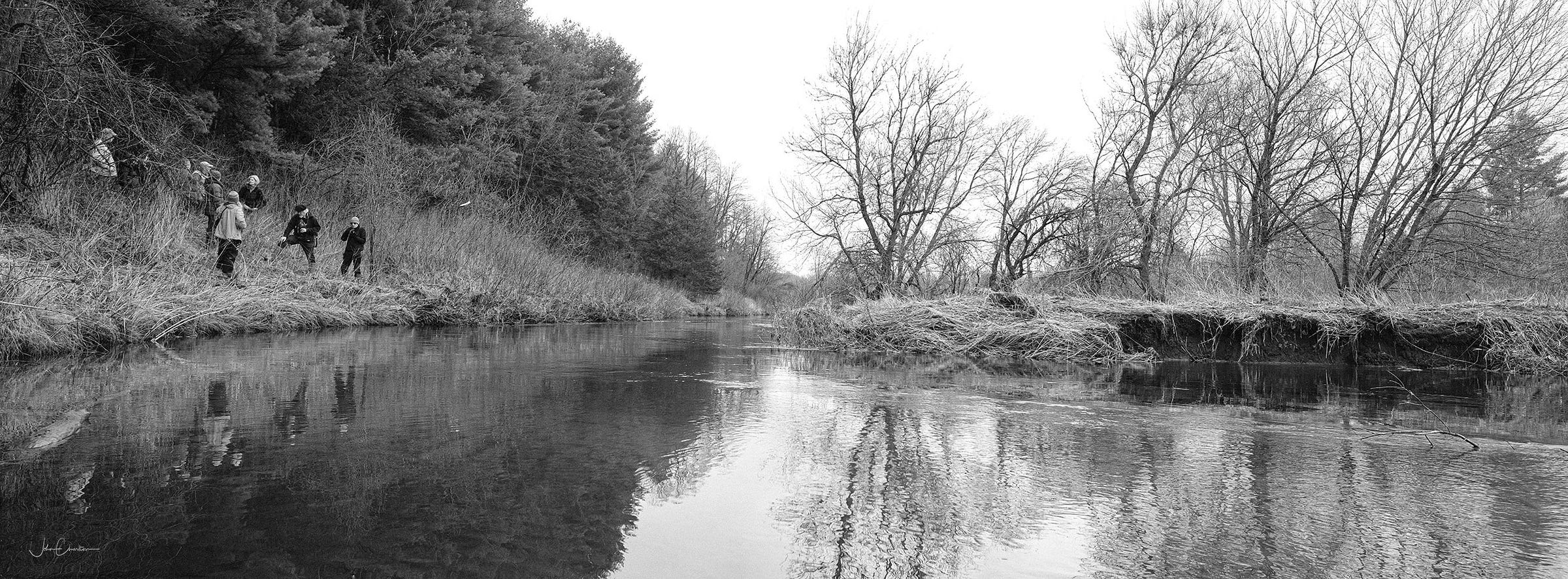
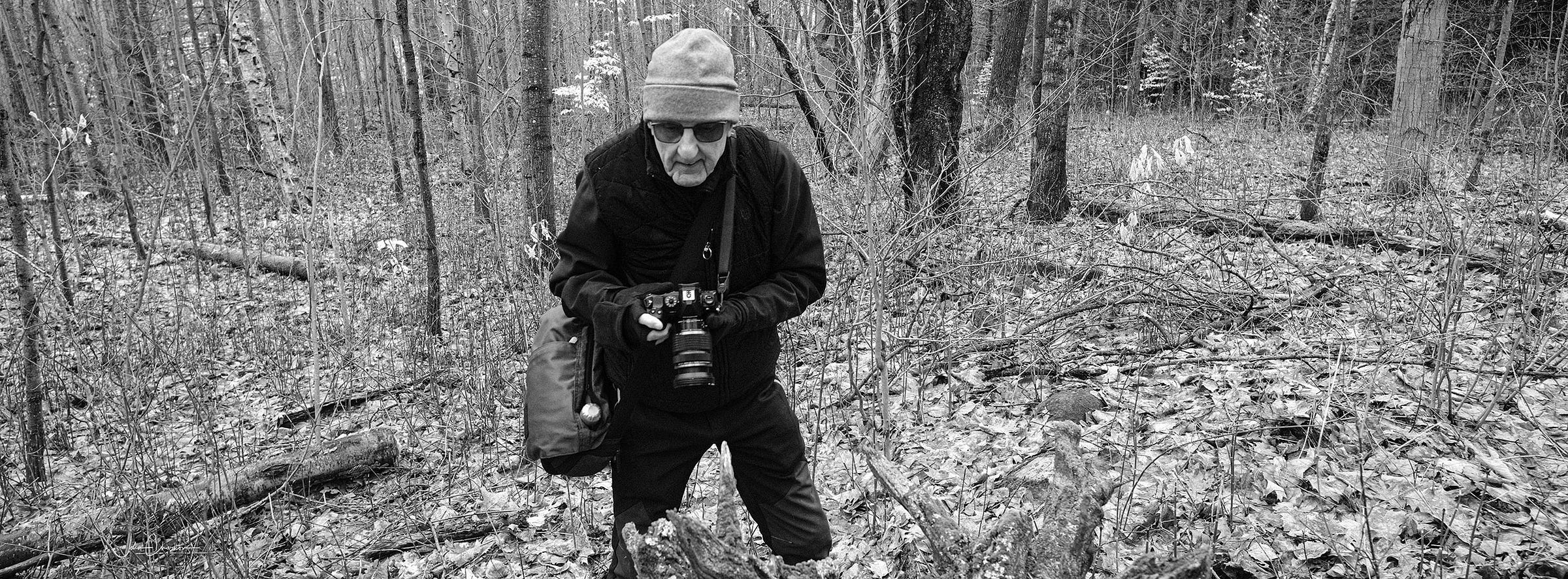
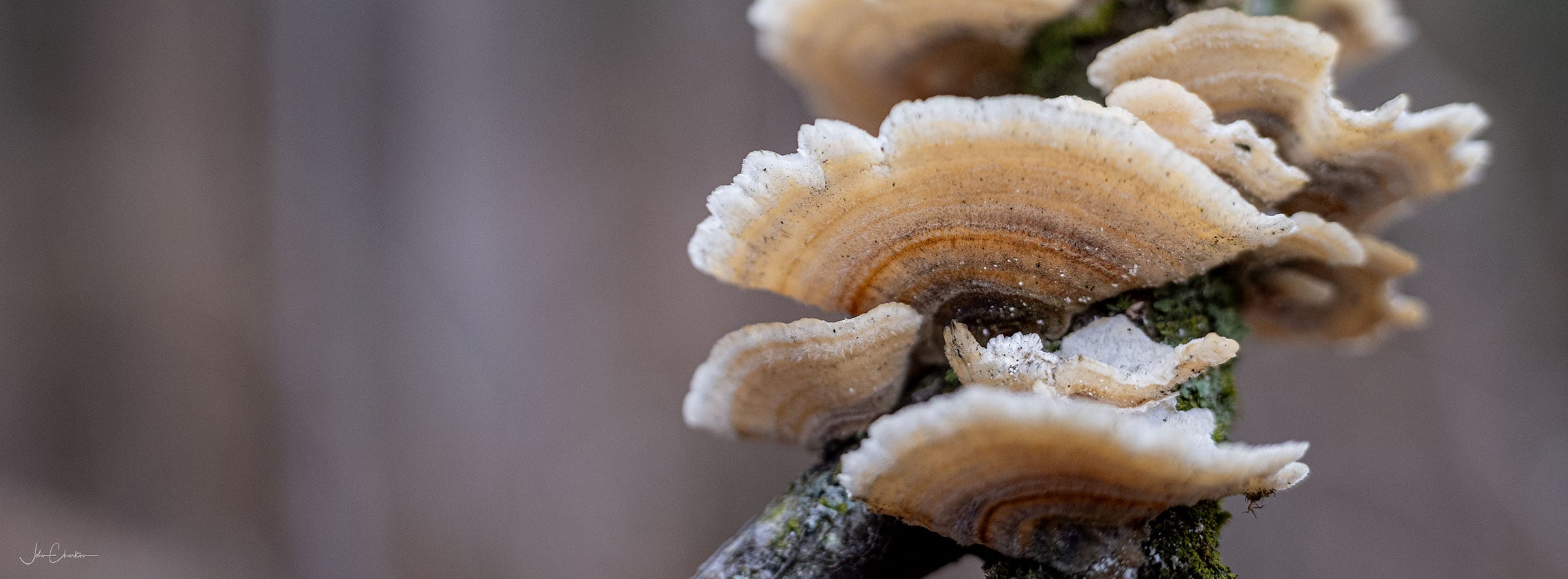
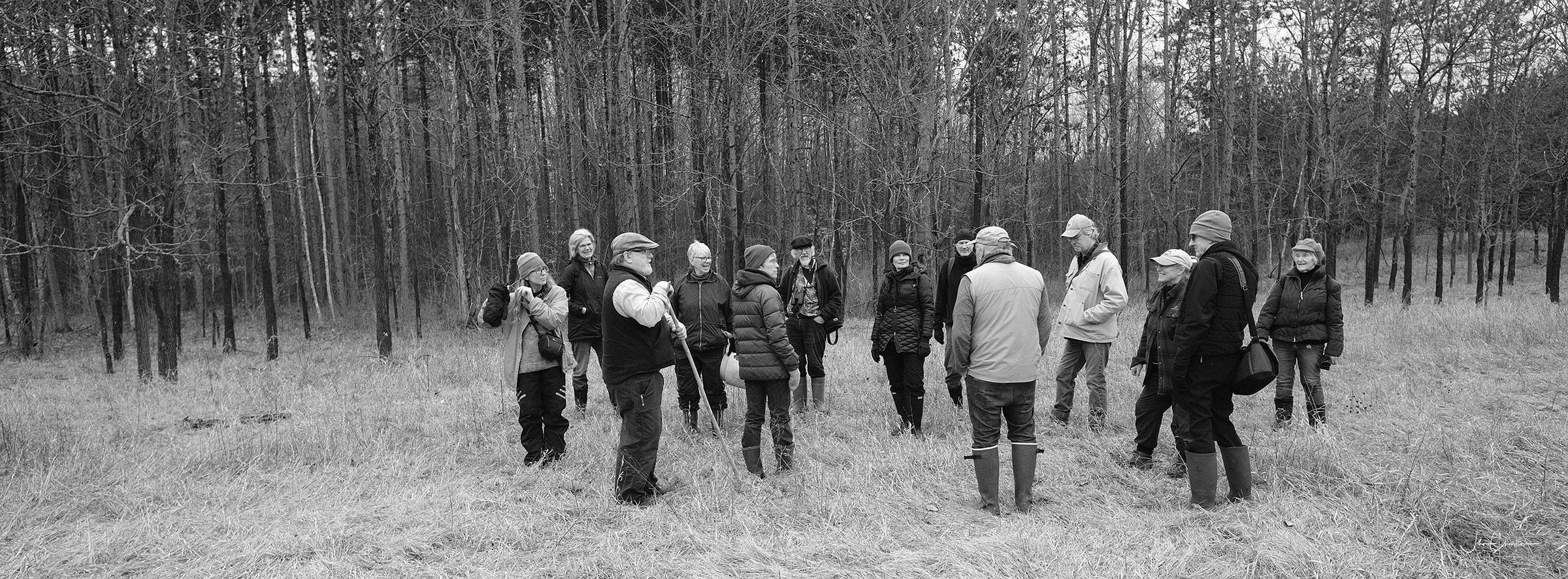
Hi John, I enjoyed reading your post with its combination of the shared nature experience and the solo technical aspects of the different ways of capturing it as you continue to explore and expand your craft, out in the world and bringing us different and beautiful perspectives on it. The song is a fine complement to the mood and intention.
Lovely to relive the walk looking at your pictures. I especially remember the lichen and the bare trees. Thanks so much!